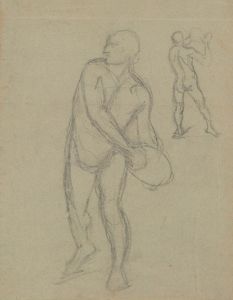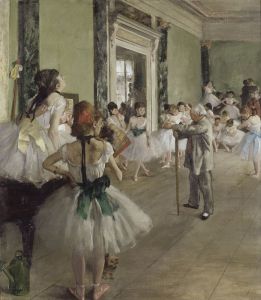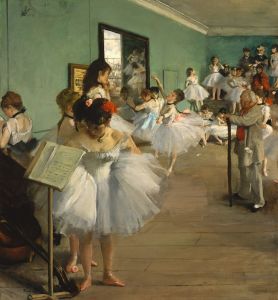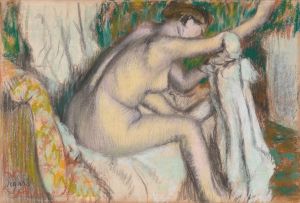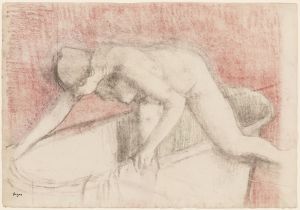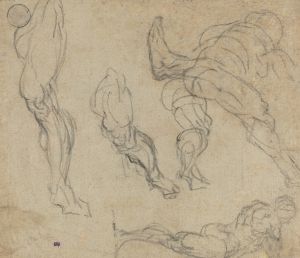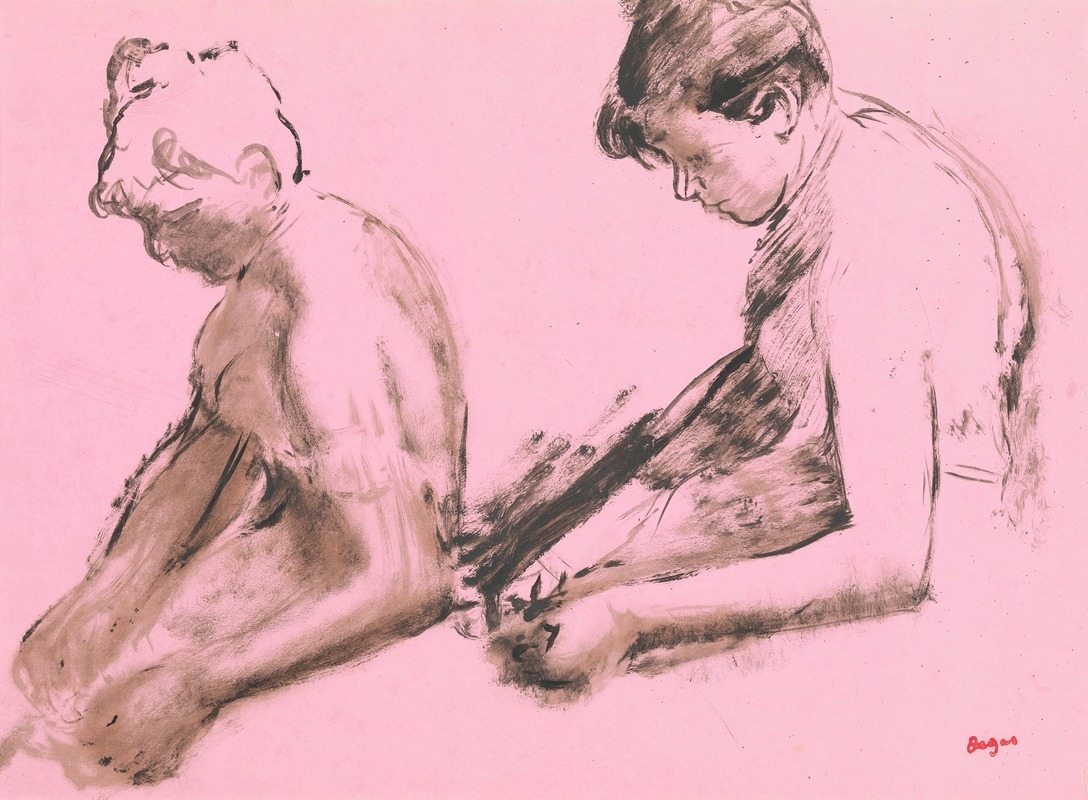
Two Studies of Dancers
A hand-painted replica of Edgar Degas’s masterpiece Two Studies of Dancers, meticulously crafted by professional artists to capture the true essence of the original. Each piece is created with museum-quality canvas and rare mineral pigments, carefully painted by experienced artists with delicate brushstrokes and rich, layered colors to perfectly recreate the texture of the original artwork. Unlike machine-printed reproductions, this hand-painted version brings the painting to life, infused with the artist’s emotions and skill in every stroke. Whether for personal collection or home decoration, it instantly elevates the artistic atmosphere of any space.
Edgar Degas, a prominent French artist associated with the Impressionist movement, is well-known for his depictions of dancers, capturing their movements, rehearsals, and behind-the-scenes moments with remarkable precision and sensitivity. One of his works, Two Studies of Dancers, exemplifies his fascination with the world of ballet and his innovative approach to composition and technique.
Two Studies of Dancers is a pastel and charcoal drawing that showcases Degas' mastery in portraying the human form in motion. The artwork features two separate studies of ballet dancers, each rendered with dynamic poses that suggest movement and the physicality of dance. Degas often used such studies as preparatory works for his larger compositions, meticulously observing and sketching dancers to understand their gestures and postures. This piece reflects his dedication to capturing the fleeting, ephemeral nature of dance.
Degas frequently worked with pastels, a medium that allowed him to achieve vibrant colors and soft textures, which were particularly suited to depicting the delicate costumes and fluid movements of dancers. In Two Studies of Dancers, the use of pastel and charcoal highlights the contrast between the dancers' bodies and their surroundings, emphasizing their forms and the energy of their poses. The work demonstrates Degas' ability to combine spontaneity with careful observation, a hallmark of his artistic style.
The subject matter of ballet dancers was central to Degas' oeuvre, and he created numerous works exploring this theme throughout his career. His interest in dancers was not limited to their performances on stage; he was equally intrigued by their rehearsals, practice sessions, and moments of rest. This focus allowed him to present a more intimate and realistic portrayal of the ballet world, moving beyond the idealized depictions often seen in art of the time.
While the exact date of Two Studies of Dancers is not definitively known, it is consistent with Degas' broader body of work from the late 19th century, a period during which he extensively explored the theme of dancers. The piece is part of a larger collection of studies and finished works that collectively offer insight into Degas' artistic process and his deep engagement with the subject of dance.
Today, Two Studies of Dancers is recognized as an example of Degas' innovative approach to art, blending traditional techniques with modern sensibilities. It continues to be appreciated for its technical skill, emotional depth, and the unique perspective it provides on the world of ballet.





